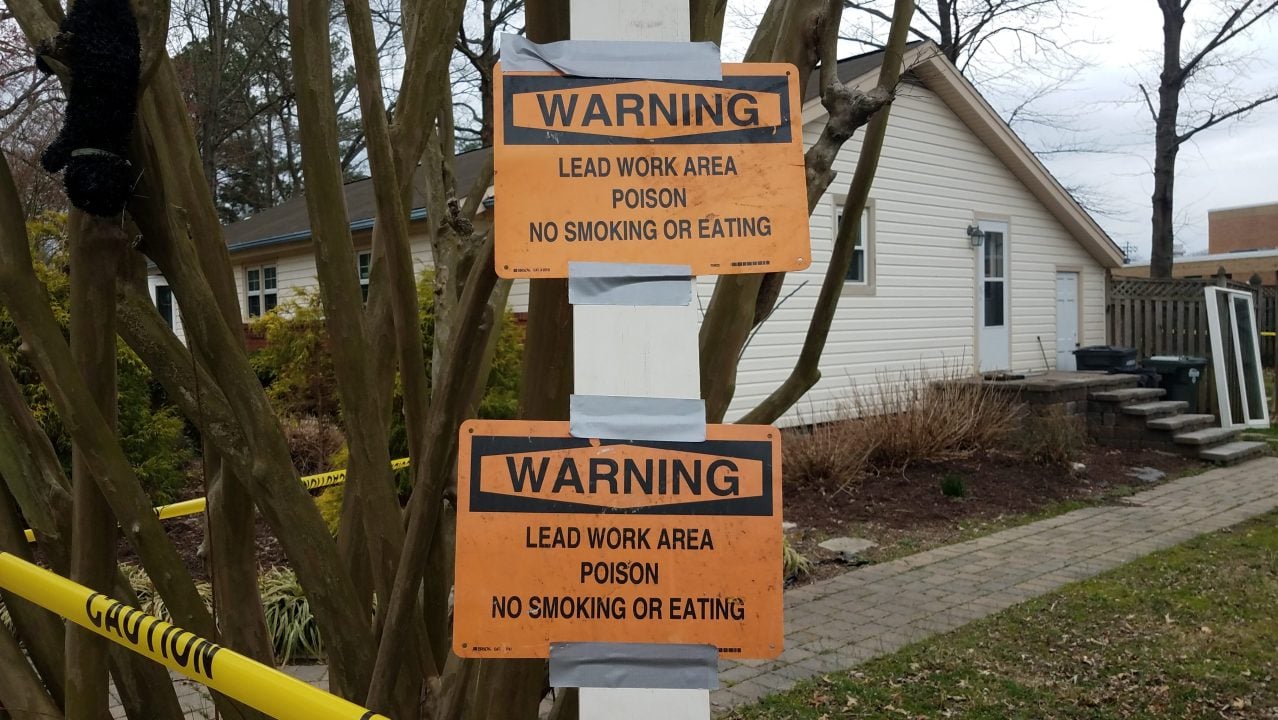Children living in predominantly Black neighborhoods at higher risk for lead poisoning, study says
Young children may still be exposed to lead-based paint in homes constructed before 1978, when the hazardous paint was outlawed.
American children living in predominantly Black and racially divided neighborhoods are more likely to be exposed to lead, which can cause brain damage.
Studies have long demonstrated that Black children often have higher blood lead levels than white ones. US News reported that recent findings, published in Pediatrics on Wednesday, were based on a survey of over 321,000 North Carolina children under age 7 who had lead testing in the early 1990s or between 2013 and 2015.
Experts contend that the data highlights childhood lead poisoning and racial segregation in neighborhoods, two issues many Americans may believe are relics of the past.

Residential segregation has continued and even worsened in many places, both in North Carolina and nationwide. Experts noted that it is not an accident but has a long history of policies such as “redlining” that separated Black Americans into areas with little investment and high poverty rates.
Marie Lynn Miranda, chancellor of the University of Illinois Chicago and the study’s lead researcher, said children who reside in such communities may endure lead exposure because of dilapidated housing.
“A lot of people think this is a problem that’s already taken care of,” Miranda said. “But it’s still the case that Black children have higher blood lead levels.”
The accumulation of lead in the bloodstream can have significant adverse health implications. Young children are particularly vulnerable because the naturally occurring element may harm their growing brains and cause learning or behavioral issues.
Miranda said that “many groups” are accountable for shielding at-risk children from lead, including landlords, neighborhoods, and physicians who test children for lead and instruct parents on reducing exposure.
“As a society,” Miranda said, “we have to decide that the children living in these neighborhoods matter as much as children in more affluent, privileged neighborhoods.”
Compared to previous generations, today’s American children generally receive significantly less lead exposure. However, not all children have benefited equally.
Young children may still be exposed to lead-based paint in homes constructed before 1978, when the hazardous paint was outlawed. Miranda said the paint, and tap water from lead pipes or plumbing are the primary ways children in the United States get exposed to lead.
The problems are prevalent in low-income areas, where landlords might require more financial incentives to take action to remove lead paint.
Still, children’s blood lead levels decreased with time. Black children had a decrease in their average levels, which fell from 6.7 micrograms per deciliter (mcg/dL) in the early 1990s to 1.6 mcg/dL by 2015. White kids had a comparable decrease, going from 4.9 to 1.5 mcg/dL.
Black children’s blood lead levels increased by 1.6% for every unit higher in the scale used by Miranda’s team to categorize areas based on the “racial isolation” of its Black people.
Neighborhood segregation also showed little change over time. Around 70% of the North Carolina census regions either increased or remained the same. When examining the overall situation, researchers discovered that neighborhood segregation had grown in 69% of the census districts.
Robert Fischer oversees the Center on Poverty and Community Development at Cleveland’s Case Western Reserve University. He was not a part of the most recent research.
Fischer emphasized that not all children with high lead levels have long-term effects. However, he said that compared to their classmates, they may do worse on reading and arithmetic tests and are more likely to enter the juvenile justice system or end up behind bars as young adults.
He and Miranda agreed that the problem’s “diffuse” nature has contributed to its difficulty in solving.
“This study is definitely confirming what smaller studies have indicated,” said Fischer. “It’s not just random chance that Black children are more exposed to lead.”
TheGrio is FREE on your TV via Apple TV, Amazon Fire, Roku and Android TV. Also, please download theGrio mobile apps today!


